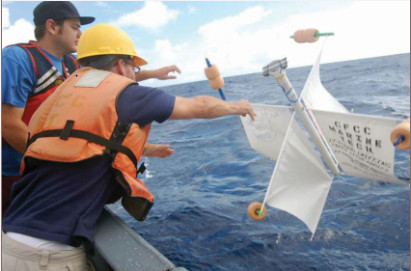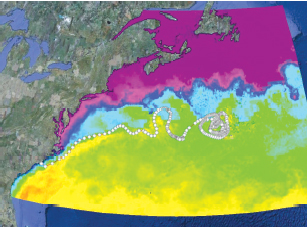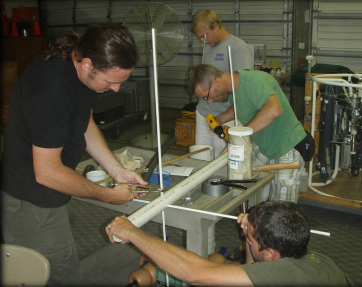Ocean Drifter Project
Ocean drifters are floating platforms equipped with sensors and satellite communication technology that can transmit data on a nearly continuous basis. They provide the maritime community, scientists, and the general public with real-time observations relating to ocean properties, such as currents and temperature, which have widespread applications in optimizing shipping routes, search and recovery, oil spill mitigation, recreation, and science.
Oceanography and Google Earth: Observing Ocean Processes with Time Animations and Student-built Ocean Drifters [click to read full publication]
Abstract
Google Earth provides an easily accessible platform for students to view animations of oceanographic processes created by merging satellite, buoy, and student-built ocean-drifter data. The power of Google Earth is that many oceanographic properties can be displayed simultaneously over time such as atmospheric pressure, winds, surface currents, and sea-surface temperature. Lessons created from these activities address many of the principal outcomes of an introductory oceanography course, including the ability to analyze the interrelationship of ocean processes and understand how modern oceanography relies on technology to observe and measure the state of the oceans.
In the classroom, the time-animation effort is paired with a drifter project where students build and release Global Positioning System–equipped drifters and watch their movement via satellite over the Internet. Because students see, touch, and feel the drifter in the classroom as they build and decorate it, they develop an inherent interest in its fate. Following the movement of the drifter fosters student interest in related oceanographic processes, many of which can be animated in Google Earth for the same time period, providing easy comparisons. The satellite data used in these animations are accessed through the National Oceanic and Atmospheric Administration (NOAA) Southwest Fisheries Science Center’s ERDDAP (Environmental Research Division’s Data Access Program) data server and displayed in Google Earth using keyhole markup language (KML) scripts. Satellite products are downloaded as .png image fi les and displayed as a series of image overlays to create time animations. Python scripts automate the process of generating KML scripts.
View MATE Ocean Drifter Curriculum Modules
Visit the MATE Drifter Home page on COSEE NOW http://coseenow.net/mate/



View Occupations that use Ocean Drifters in their work

